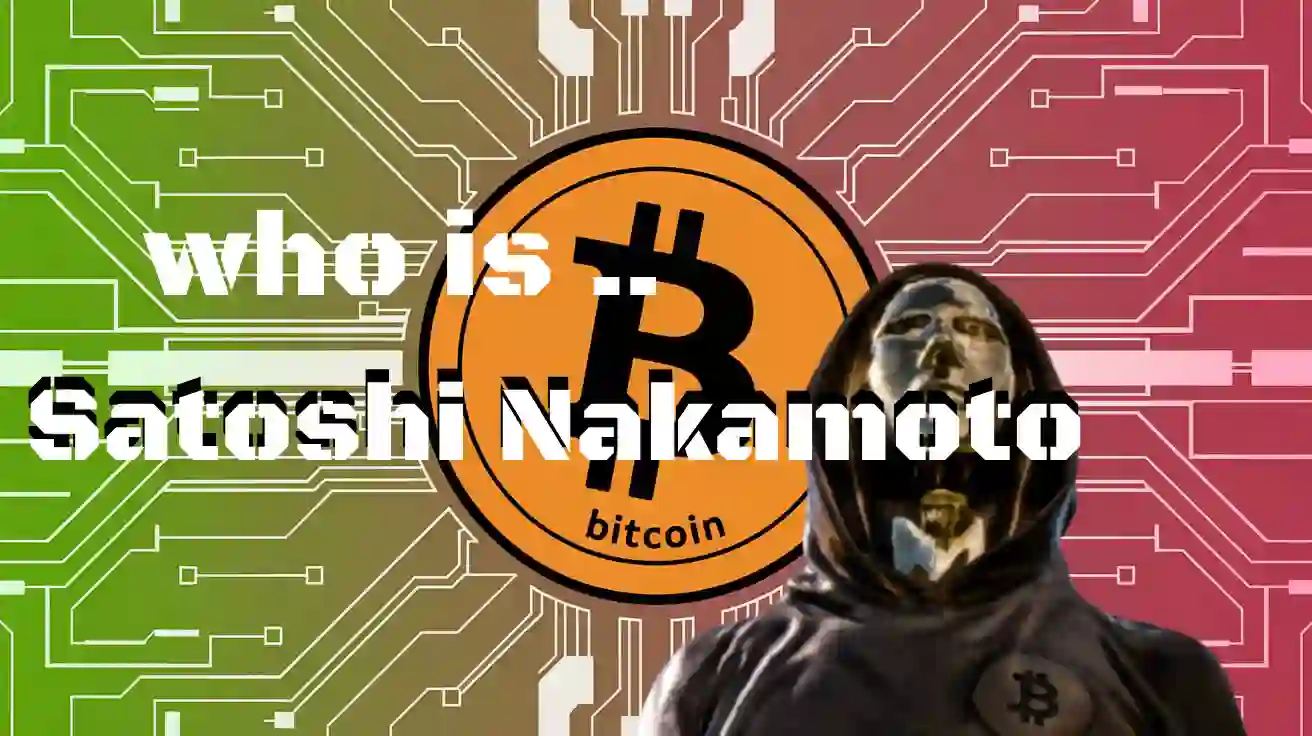Bitcoin, the world’s first decentralized digital currency, revolutionized finance when it emerged in 2008. Yet, its inventor remains one of the greatest mysteries in modern technology. The pseudonymous creator, known only as Satoshi Nakamoto, has never been definitively identified, despite extensive speculation.
Even more intriguing, Bitcoin wallets attributed to Nakamoto, containing approximately 1.1 million BTC, have remained untouched for years, reinforcing the mystery. The last known transaction from these wallets occurred on January 12, 2009. If these coins were ever moved, the impact on the cryptocurrency market would be seismic.
The Origins of Bitcoin: What We Know
The first sign of Bitcoin’s existence appeared in August 2008, when someone anonymously registered bitcoin.org. Just two months later, in October 2008, Nakamoto published the now-famous Bitcoin whitepaper, titled “Bitcoin: A Peer-to-Peer Electronic Cash System”. The document outlined the fundamentals of Bitcoin’s decentralized nature and how it could function as an alternative to traditional financial systems.
By January 2009, the Bitcoin network was operational, with Nakamoto mining the first-ever Bitcoin block, known as the Genesis Block. This block contained a message that read:
“The Times 3 January 2009 Chancellor on brink of second bailout for banks.”
This inscription, a reference to a newspaper headline, not only time-stamped Bitcoin’s birth but also suggested Nakamoto’s motivation—perhaps a reaction to the instability of the global banking system.
Early Days and Disappearance
For the first ten days after Bitcoin’s launch, Nakamoto was its sole miner, accumulating over one million BTC. During this period, the first recorded Bitcoin transaction occurred, when Nakamoto sent Bitcoin to Hal Finney, a prominent cryptographer and one of Bitcoin’s earliest supporters.
Between November 2009 and December 2010, Nakamoto was actively engaging with the online community on the bitcointalk.org forum, discussing Bitcoin’s development. However, in April 2011, Nakamoto sent a final email, stating:
“I’ve moved on to other things. It’s in good hands with Gavin and everyone.”
Since then, Nakamoto has vanished, leaving Bitcoin’s future in the hands of its decentralized community.
The Hunt for Nakamoto: Clues and Theories
Over the years, linguistic patterns, time zone analysis, and coding style have fueled countless theories about Nakamoto’s identity. Despite claims that Nakamoto was Japanese, his writing style suggests otherwise. He used British English spellings and expressions, leading some to speculate that he could be from the UK.
Further analysis of Nakamoto’s forum activity suggested a sleep pattern aligned with Greenwich Mean Time (GMT), supporting theories that he was based in Europe or the US East Coast. Additionally, early Bitcoin code revealed that Nakamoto may have used a Russian proxy server to mask his online presence.
In February 2025, a new lead emerged when Conor Grogan, head of product business operations at Coinbase, discovered on-chain transactions connecting Nakamoto’s wallet to Cavirtex, a Canadian exchange acquired by Kraken in 2016. If Cavirtex collected KYC (Know Your Customer) data, Kraken may possess identifying records of Nakamoto. However, Kraken has yet to comment on the matter.
NEW: Satoshi Nakamoto's earliest collaborator Martii 'Sirius' Malmi just released their entire email history.
At 120 pages, its the most significant addition to the archives of #Bitcoin's unknown inventor.
Here are the most important new findings ✨ pic.twitter.com/lDSh0xzojH
— The Bitcoin Historian (@pete_rizzo_) February 23, 2024
Who Might Be Satoshi?
Many individuals have been speculated to be Satoshi Nakamoto, with some theories more plausible than others. Below are some of the top contenders:
1. Hal Finney
A cryptographer and the recipient of the first Bitcoin transaction, Finney was an early advocate of digital currency. Before his death from ALS in 2014, he denied being Nakamoto. Some believe his cryogenic preservation may explain why Nakamoto’s Bitcoin has never been moved.
2. Nick Szabo
A computer scientist known for developing “Bit Gold”, a Bitcoin precursor. Linguistic analysis has noted similarities between Szabo’s writing and Nakamoto’s whitepaper.
3. Adam Back
A cryptographer who created “Hashcash,” a system that influenced Bitcoin’s proof-of-work model. Emails revealed in 2024 confirmed he communicated with Nakamoto but denied being him.
4. Gavin Andresen
The developer who Nakamoto entrusted with Bitcoin’s source code. However, he has never claimed to be Nakamoto.
5. Craig Wright
An Australian entrepreneur who has publicly declared himself as Satoshi. However, a UK court ruled in March 2024 that Wright was not the creator of Bitcoin, discrediting his claims.
6. Dorian Nakamoto
A physicist and engineer with the birth name Dorian Prentice Satoshi Nakamoto. Newsweek’s 2014 article identified him as Bitcoin’s creator, but he has vehemently denied any involvement.
7. Len Sassaman
A cryptography expert who contributed to the cypherpunk mailing list where Nakamoto first introduced Bitcoin. He died in 2011, and some believe his death coincides with Nakamoto’s disappearance.
8. Elon Musk
A theory surfaced in 2017, claiming that Musk, the Tesla and SpaceX CEO, was behind Bitcoin. Musk has denied this and stated he lost the small amount of BTC given to him.
9. Peter Todd
In 2024, an HBO documentary, Money Electric: The Bitcoin Mystery, suggested that Bitcoin developer Peter Todd could be Nakamoto. The theory was dismissed by the Bitcoin community.
Why Did Nakamoto Disappear?
Nakamoto’s choice to remain anonymous is likely a deliberate and strategic decision. Several reasons have been proposed:
- Decentralization – If Nakamoto revealed his identity, he might hold undue influence over Bitcoin’s development, contradicting the idea of a decentralized financial system.
- Legal Risks – Bitcoin challenges traditional banking structures. Governments might have targeted Nakamoto to suppress the cryptocurrency’s rise.
- Personal Safety – With over $100 billion in Bitcoin, Nakamoto could be a target for hackers, criminals, or even governments.
How Much Bitcoin Does Nakamoto Own?
Estimates suggest Nakamoto mined 1.1 million BTC in Bitcoin’s early days, a fortune that remains untouched. As of March 2025, this stash is valued at over $107 billion. If Nakamoto were to return and access these coins, the cryptocurrency market could experience significant volatility.
Bitcoin users occasionally send BTC donations to Nakamoto’s original wallet, either as a tribute or an attempt to coax him into revealing himself. In January 2024, someone transferred $1.2 million to Nakamoto’s wallet—its purpose remains a mystery.
What If Nakamoto Returns?
If Nakamoto reemerged, the implications would be profound. He would need to verify his identity, most likely by moving Bitcoin from his known wallets. This would confirm his existence and potentially destabilize Bitcoin’s market.
Beyond financial impacts, Nakamoto’s ideological influence would return. His original writings are treated as sacred texts in the crypto community, but a living Nakamoto could reshape Bitcoin’s future direction.
The Legacy of Satoshi Nakamoto
Regardless of his identity, Satoshi Nakamoto’s creation has transformed the world. Bitcoin has become a major financial force, disrupting banking and reshaping digital finance.
A statue of Nakamoto in Budapest symbolizes his anonymity—the face is featureless, reflecting the viewer’s own face. The message is clear: Bitcoin belongs to everyone.
Until the day Nakamoto’s true identity is revealed—if that day ever comes—he remains an enigma, a ghost in the digital machine.



